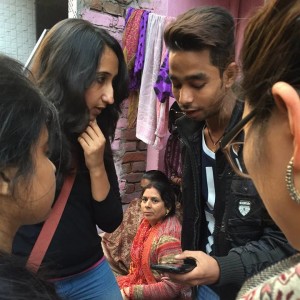
Our co-founder Marco Ferrario talks about our latest theory of change and how a simple tool or an idea can change the world, one house at a time.
Remember those little black gadgets called pagers that could be hooked onto belts? Or playing ‘Snake’ on the Nokia hand held mobile phones that weighed almost a kilo? In less than two decades, mobile phones today can do everything from clicking pictures to online payments. In just a matter of few years, almost every person in Indian cities can now be seen with a phone. And, looking at the rapid penetration of smartphones, in just a few more years, we can expect everyone to be online.
Though informal settlements in Indian cities might lack basic facilities and infrastructure, digital networks are fast connecting low-income communities. That is the network we want to tap to be able to solve the problem of access to construction knowledge in low cost neighborhoods, which we have found to be the key reason for structurally unsafe buildings there.
Our idea is to build a series of services in the form of mobile applications – or APPs– that allow those engaged in self-construction to do a good job since professionals like architects and engineers in India are simply not available for these communities. We are targeting self-employed masons and low-income households who want to construct their own homes and do not have the technical know-how to build safe, reliable and design-friendly constructions. We want to use mobile platforms to put the technical information they need, directly in their hands.
Will it work?
There is an excellent chance that it will. Let’s take a developing country such as India for instance. Mobile penetration was up to 79% in April 2014, and will only grow. India is the third largest smart phone market in the world. While the literacy rates are increasing by the year, design and architectural information can be made easy to understand through visual aids. This will solve the infrastructure needed to deliver our service, and it’s a great starting point!
Of course, we need proof of concept. In partnership with national NGOs such as SEWA and Saath, and with support from donors such as Internet.org, this is exactly what we are focusing on. We are prepared for challenges: Can the app be made simple enough? Will people be able to navigate it, intuitively? Will they believe that the information is authentic, and potentially life-saving, even? Will they tell each other about it? Will the usefulness and subscription to the idea grow?
We are banking on our past experience and relationships with communities who have taught us the way forward on many of our projects. We want people to know that the information they will receive via our APPis reliable, trustworthy, “the go-to-place” for construction guidance. That’s one part of our challenge.
The second is to build an application that is practical, workable. We are building our prototypes with our potential users, to be able to take it back to them to test how it is working before we scale up the idea. We are also experimenting with language(s), so that we can take the idea to different markets.
What keeps mHS CITY LAB folks up at night, is finding new ideas for building a more egalitarian urban society. A series of APPs may not be the only solution, but can form a key ingredient in building a movement towards awareness about construction safety.So that the poorest people are not, in the end, the most vulnerable, merely for the lack of good information that should be available to everyone.We believe that having access to construction knowledge is a human right – isn’t the house the core of all our lives and activities?
If you have an idea that can help, please contact marco@mhscitylab.org